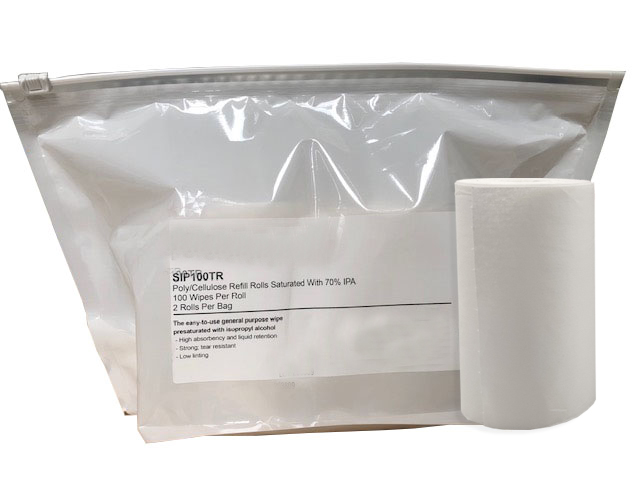Since 2012 - Smart Weigh is committed to helping clients increase productivity at a reduced cost. Contact us Now!
Since 2012 - Smart Weigh is committed to helping clients increase productivity at a reduced cost. Contact us Now!
Alcohol wipe production automation is the process of replacing manual handling, dosing, and packaging operations with closed-loop, explosion-safe equipment designed specifically for isopropyl alcohol (IPA) environments. This approach eliminates direct human contact with flammable vapors while maintaining product quality and throughput.
Modern automated systems integrate servo-controlled dosing, enclosed saturation chambers, and continuous vapor monitoring to create safer working conditions. Unlike traditional packaging automation, alcohol wipe systems require specialized ATEX-rated components and explosion-proof designs to handle the unique challenges of flammable solvent environments.

Vapor Inhalation Risks:
Manual alcohol wipe production exposes workers to dangerous IPA vapor concentrations that frequently exceed Time-Weighted Average (TWA) safety limits of 400 ppm over 8 hours. During peak production periods, vapor concentrations can reach 800-1200 ppm in poorly ventilated areas.
Common symptoms include:
● Dizziness and disorientation within 15-30 minutes of exposure
● Persistent headaches lasting 2-4 hours post-shift
● Respiratory irritation and throat burning
● Reduced alertness increasing accident probability by 35%
High-risk exposure zones include filling stations where operators manually pour IPA, open-soak areas where substrates absorb solvent, and pre-seal zones where vapors concentrate before packaging.
Direct Contact Dangers:
Skin and eye contact occurs during manual dosing operations, container changeovers, and quality sampling procedures. Dermal absorption of IPA can contribute up to 20% of total exposure load, while splash incidents affect 40% of manual operators annually.
Static electricity buildup from synthetic PPE creates ignition risks, particularly when combined with ungrounded metal containers and transfer equipment. Non-rated motors, sensors, and heating elements become potential ignition sources in vapor-rich environments.
Operational Safety Issues:
Repetitive manual tasks including lifting 50-pound solvent containers, hand-packing finished products, and frequent equipment adjustments create ergonomic stress injuries affecting 25% of production workers annually.
Fatigue-induced errors increase during extended shifts, leading to:
● Incomplete cap sealing (12% of manual production)
● Over-saturation waste (8-15% material loss)
● PPE compliance lapses (observed in 30% of shift observations)

ATEX-Certified Transport: Intrinsically safe conveyor belts with anti-static properties
Vapor-Safe Operation: Non-sparking materials and grounding systems prevent ignition
Gentle Product Handling: Variable speed control to prevent wipe damage during transport
Clean Room Compatible: Smooth surfaces for easy sanitization and contamination prevention
Explosion-Proof Design: ATEX Zone 1/2 certified for safe alcohol vapor environments
Precision IPA Application: Controlled saturation systems ensure consistent wipe moisture content
Vapor Management: Integrated extraction systems remove alcohol vapors during filling process
Roll Processing Capability: Handles continuous wipe rolls with automatic cutting and separation
Contamination Control: Enclosed filling chamber maintains product purity
ATEX-Certified Components: Intrinsically safe electrical systems and explosion-proof motors
Advanced Vapor Extraction: Active removal of alcohol vapors during sealing process
Temperature-Controlled Sealing: Precise heat control prevents alcohol vapor ignition
Enhanced Barrier Sealing: Optimized for moisture-barrier films to retain IPA content
Real-Time Safety Monitoring: Gas detection systems with automatic shutdown capabilities
Variable Bag Formats: Accommodates single-serve to multi-count pouch configurations
Production Speed: Up to 60 explosion-safe packages per minute
Exposure reduction of 90-95% achieved through enclosed processing and automated material handling. Incident elimination prevents an average of 3-5 reportable exposure events annually per facility.
Workers' compensation claims decrease by 60-80% following automation implementation, while regulatory compliance scores improve from 75-80% to 95-98% during audits.
Saturation consistency improves from ±15% (manual) to ±2% (automated) standard deviation. Customer complaint rates decrease from 1.2% to 0.2%, while first-pass yield increases from 88% to 96%.
Throughput increases of 15-25% result from eliminated manual bottlenecks and reduced changeover times (45 minutes vs. 2 hours manually). Giveaway reduction saves 8-12% in material costs through precise dosing control.
Energy efficiency improves 20-30% through smart ventilation systems responding to actual vapor loads rather than continuous maximum operation.
Q: What are the explosion-proof requirements for alcohol wipe production?
A: Equipment must meet ATEX Zone 1 or Class I Division 1 standards for Group D (IPA) applications. This includes explosion-proof motor housings, intrinsically safe sensors rated for 400°C ignition temperature, and purged/pressurized control panels.
Q: Can automation handle different wipe formats and sizes?
A: Modern systems accommodate substrate widths from 50-300mm, thicknesses from 0.5-5.0mm, and package formats including singles (10-50 count), canisters (80-200 count), and soft packs (25-100 count) with 5-minute changeover capability.
Q: What maintenance is required for automated alcohol wipe systems?
A: Preventive maintenance includes weekly sensor calibration verification, monthly pump performance testing, quarterly ventilation system inspection, and annual explosion-proof equipment certification renewal.
CONTACT US
Building B, Kunxin Industrial Park, No. 55, Dong Fu Road , Dongfeng Town, Zhongshan City, Guangdong Province, China ,528425
How We Do It Meet And Define Global
Related Packaging Machinery
Contact us, we can give you professional food packaging turnkey solutions

Copyright © Guangdong Smartweigh Packaging Machinery Co., Ltd. | All Rights Reserved